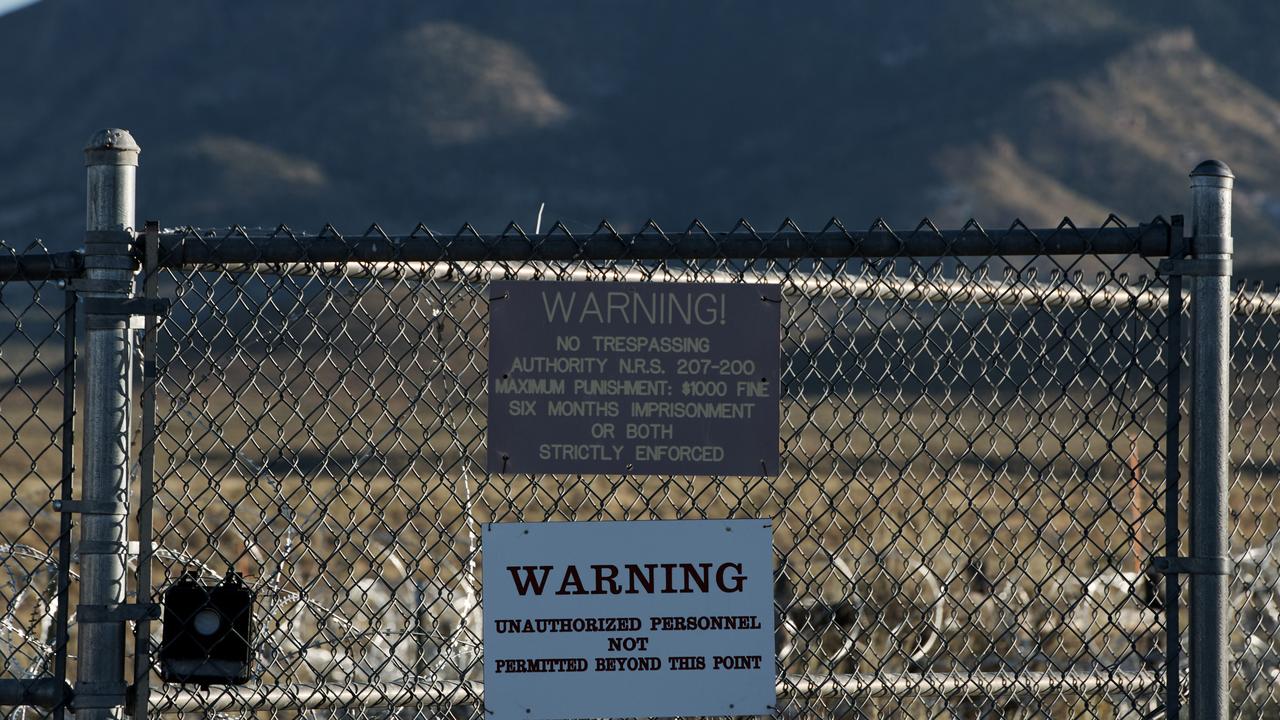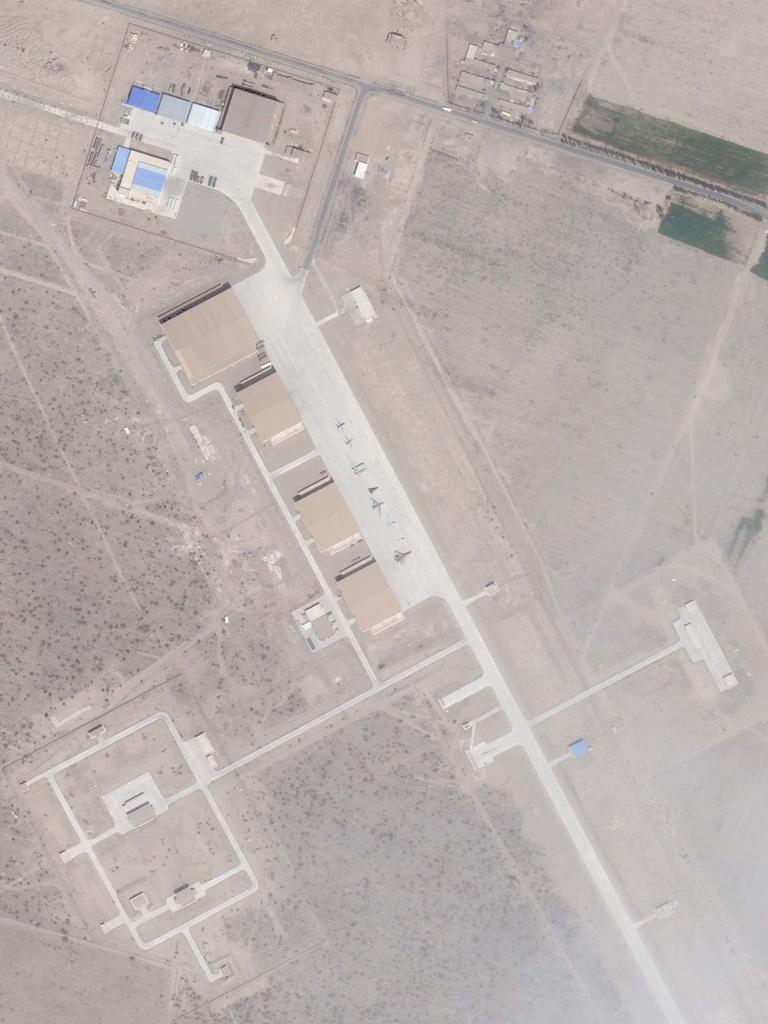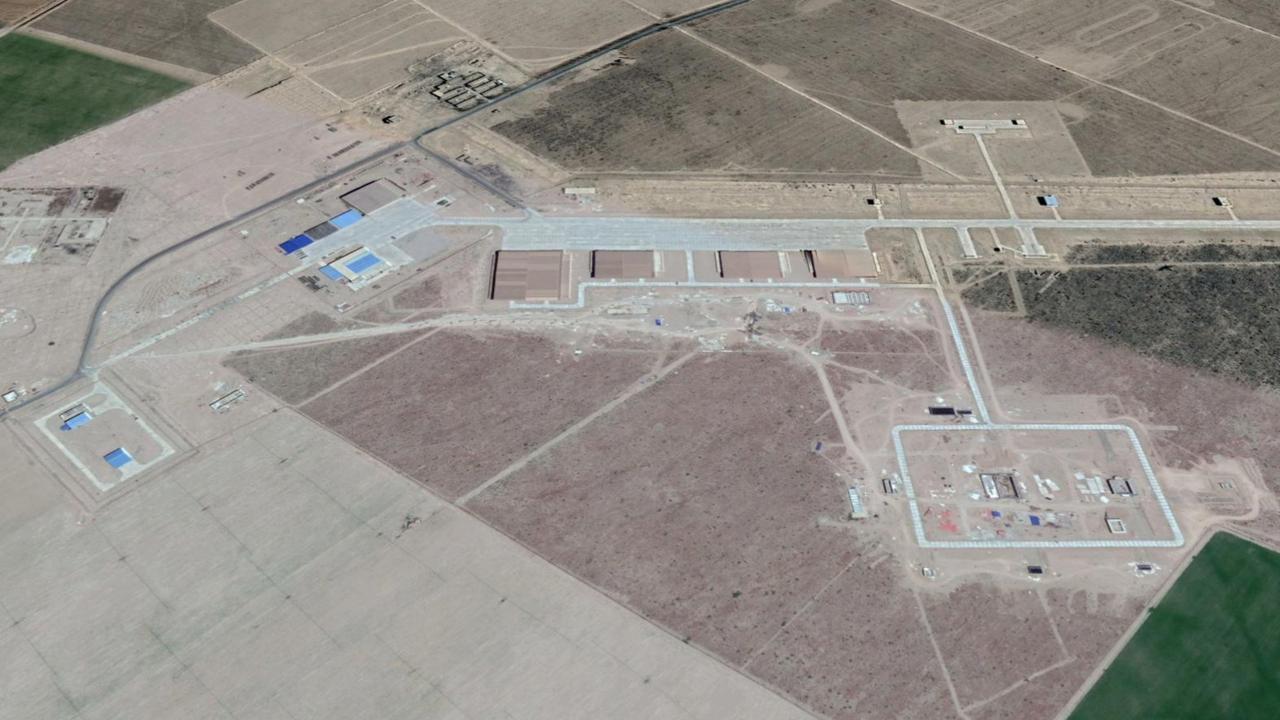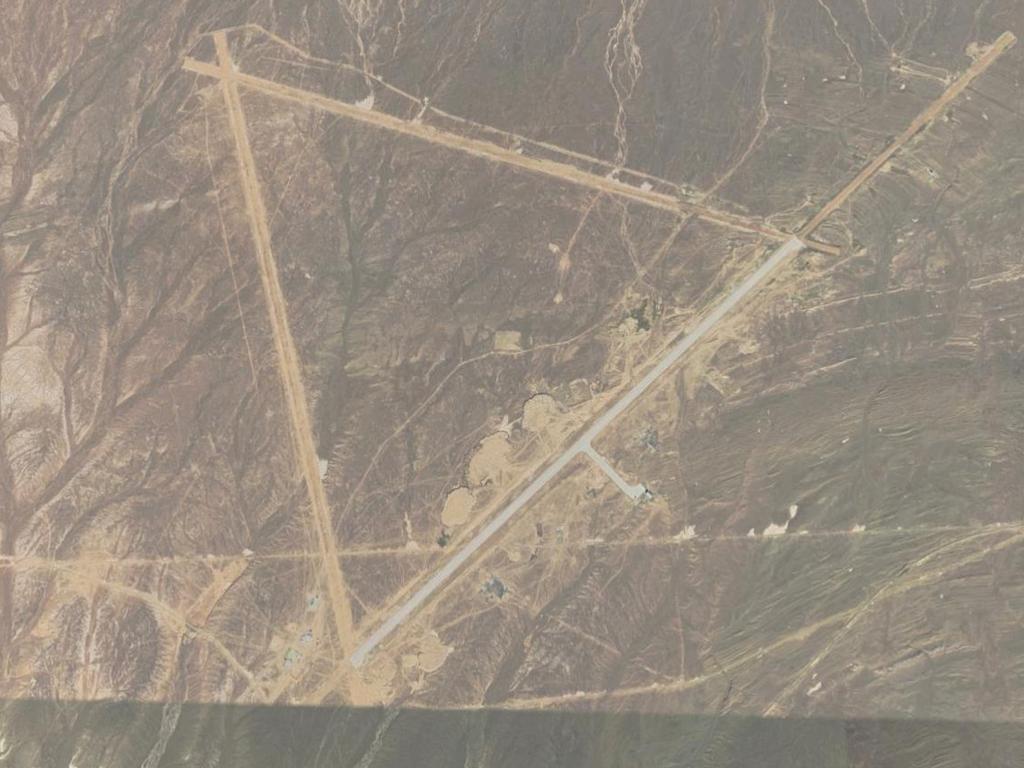China builds its own Area 51 in outback as arms race continues
In the depths of “outback” China there are two secret test facilities likened to America’s mysterious Area 51.

It’s big. It’s remote. It’s mysterious. It’s an enormous radioactive desert in “outback” China. And Beijing is building its equivalent to Area 51 there. Two of them.
The arms race between East and West is once again heating up.
Stealth is old news. As are cruise missiles and high-flying spy planes.
The “black” projects of the 2020s are all about drones, artificial intelligence and sixth-generation combat aircraft.
The United States has had its “Area 51” lost among the dunes of Nevada since the end of World War II. Though it never officially existed before 2013. It’s been called Dreamland. Watertown. The Nevada Training Range. Paradise Ranch. Groom Lake.
But, mostly, it’s known as Area 51.
RELATED: Why is Area 51 suddenly a “thing”?

Aircraft such as the ultra-fast, ultra-high flying SR-71 Blackbird was born there. Secret breakthroughs such as the F117 Nighthawk stealth fighter were based there. Many other weird and wonderful design concepts were tested there.
Now China’s in the arms race business. So it’s building its own.
RELATED: China launched mystery robotic space plane into orbit

It appears to have chosen a former nuclear test range in a dry corner of Xinjiang province as its secret testing facility. With the local Uighur population imprisoned or intimidated into submission, its remoteness makes it easy to spot strangers. And if its scorching heat and parched sands don’t discourage ‘accidental’ intrusions, the radioactivity probably will.
But, in the era of commercial satellite surveillance, hiding what’s happening at its expanding airfields is proving to be problematic.
Malan Air Base, Xinjiang
The Malan military air facility is close to Xinjiang’s Bostun lake amid some of the region’s handful of Uighur and Mongol communities. It’s also on the northwestern edge of the Lop Nur nuclear test facility.
RELATED: Startling find deep in China desert

Established with the help of the Soviet Union in 1959, some 45 nuclear tests were conducted in this desert wasteland before it ceased operations in 1996. Aircraft dropped atomic bombs. Experimental devices were exploded on towers. Missiles delivered warheads. And large-scale weapons were detonated underground.
Satellite photos reveal this air base to be at the heart of Beijing’s drone development program.
The Warzone’s Tyler Rogoway analysed fresh images from Planet Labs. He spotted an exotic line-up of People’s Liberation’s Army Air Force drone prototypes, with a manned J-16 Flanker fighter alongside them.

“At first glance, we thought this could be an unmanned or optionally manned Flanker derivative that is undergoing testing, or something to do with aerial teaming of manned and unmanned aircraft,” he wrote.
It’s something Australia has been actively pursuing with its Loyal Wingman drone project. The large artificial-intelligence-controlled multi-role drones are intended to fly under the watchful eye of an F-35 Stealth Fighter, each helping the other reach and destroy its target.
The United States is working on a similar “Skyborg” project. Other nations, such as the UK and Russia, are also on the bandwagon.
Beijing is believed to call its project “Intelligence Victory”.
Lop Nur Air Base, Xinjiang
Malan air base isn’t the most mysterious feature of Lop Nur. About 200km southeast is an even more unusual facility.
It’s enormous.
It’s in the middle of nowhere.
It’s hardly been used.
But it’s undergoing some heavy expansion work.
The first signs of construction were noticed in 2016.
What it’s for remains largely unknown.

It’s believed to have been the landing site of China’s first uncrewed spaceplane flight in September last year. But its landing and transfer to sheltered facilities went unobserved. And Beijing hasn’t released any footage of the winged craft, which probably serves a similar role to the secretive Boeing X-37B.
Each of its three runways – arrayed in a triangular formation – are an enormous 5km long.
And construction work continues.
Satellite photos from Maxar reveal a dramatic expansion of its hangar and service facilities is underway. According to NPR, work has begun in recent months on a dozen large buildings attached to a service strip leading from its primary, paved runway.
What purpose could these serve?
It could facilitate permanent activity at the secret site.
Hiding and Finding
China is developing its own strategic stealth bomber, the H-20. Like the 1990s vintage B-2 Spirit and its B-21 Raider replacement, this large aircraft is intended to range far across the planet - delivering nuclear or conventional warheads without being observed.
It’s also developing new fighter aircraft for its rapidly expanding aircraft carrier fleet. And then there’s a probable replacement project for the J-20 stealth fighter.
This is before its enormous array of experimental drone designs are taken into consideration.
Keeping such projects secret has become incredibly difficult.
“An important component of security competition over the next decade will be the challenge of ‘hiding and finding,’ especially the struggle to identify the locations and activities of adversaries such as China and Russia,” a recent Center for Strategic & International Studies report states.
“This challenge entails identifying the locations and activities of adversaries, including the movement of their armies, navies, air forces, and intelligence operatives.”
The ever-present threat of “eyes in the sky” saw Islamic State develop some simplistic tactics to hide their activities. Streets were covered with awnings. Vehicles were disguised. Dummies caused distractions. Actual equipment was carefully hidden.
The world’s great powers have taken note.
The US has expanded the size of the hangars at its Area 51 testing facility to keep its projects out of sight. Putting them on the runway is restricted to the increasingly narrow windows between photographic satellites passing overhead.
But much more may be needed.
Such is the quantity and quality of commercial satellite imagery that a whole new realm of open source intelligence (OSINT) has been harassing international powers. And new means of deception - or interference - are likely to appear soon.”
Jamie Seidel is a freelance writer | @JamieSeidel




